#Sir Noël Coward
Photo

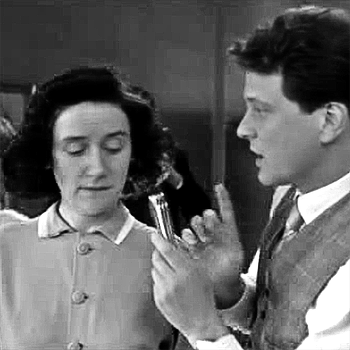
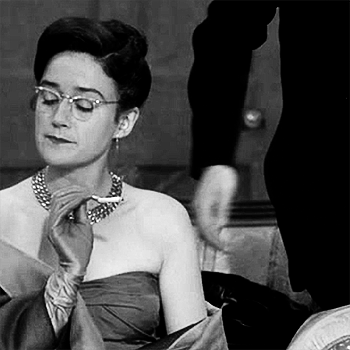
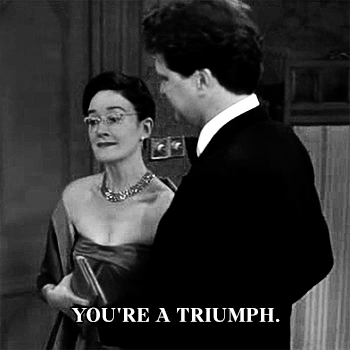

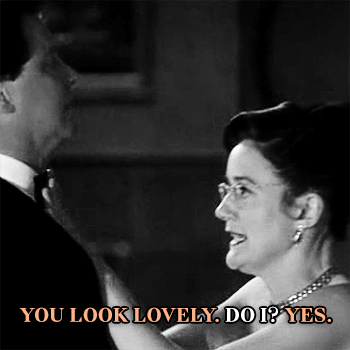
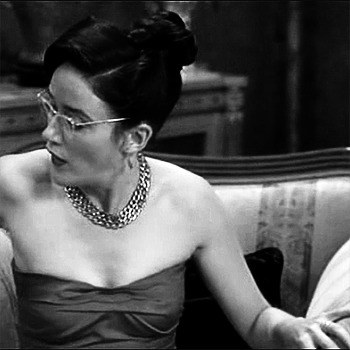

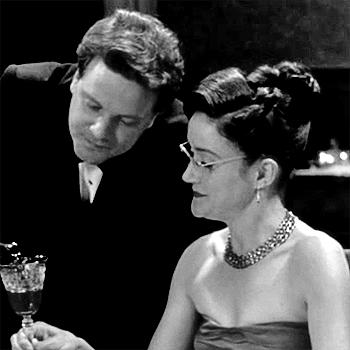
Be an angel, Peter, and get me a drink. I’m positively gasping.
Relative Values (2000)
#Relative Values#Relative Values 2000#Peter Ingleton#Dora Moxton#Noël Coward#Noel Coward#Colin Firth#Sophie Thompson#period drama#perioddramaedit#periodedits#otpsource#my gifs#Peter and his Felicity-go-marry-Crestwell...#go consider a reasonable move yourself sir#fics are so in order#something full of fluff and humour and witty dialogues
89 notes
·
View notes
Text
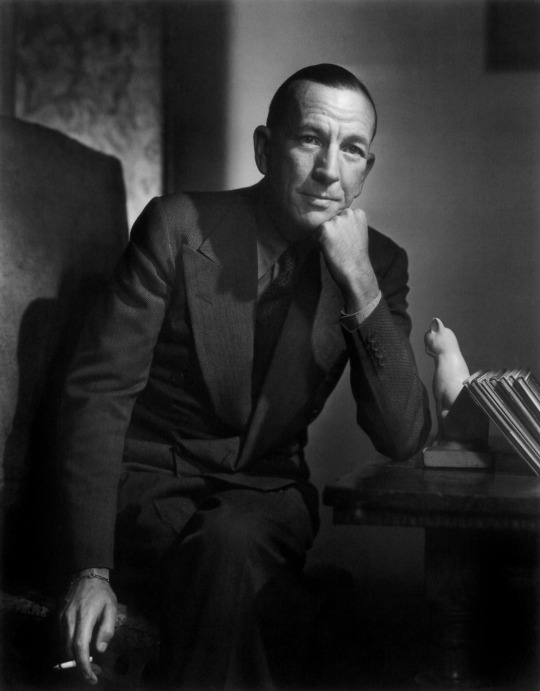
“It's discouraging to think how many people are shocked by honesty and how few by deceit.” (Blithe Spirit)
- Sir Noël Coward (December 16, 1899 – March 26, 1973)
47 notes
·
View notes
Text
THIS DAY IN GAY HISTORY
based on: The White Crane Institute's 'Gay Wisdom', Gay Birthdays, Gay For Today, Famous GLBT, glbt-Gay Encylopedia, Today in Gay History, Wikipedia, and more … April 14

April 14, 1962 Description: People mailing their taxes.

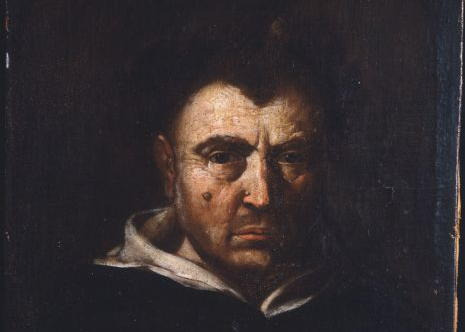
1600 – Italy: Philosopher Tomasso Campanella (1568-639) is jailed, spending twenty-seven years imprisoned in Naples in various fortresses. He was a Dominican friar, Italian philosopher, theologian, astrologer, and poet.
He is overheard saying to his cellmate: "O Father Pietro, why don't you do something so that we may sleep together, and we may get pleasure?" Pietro replied "I wish I could, and I'd even bribe the gaolers with ten ducats. But to you, my heart, I would like to give twenty kisses every hour."
Campanella was finally released from prison in 1626, through Pope Urban VIII, who personally interceded on his behalf with Philip IV of Spain. Taken to Rome and held for a time by the Holy Office, Campanella was restored to full liberty in 1629. He lived for five years in Rome, where he was Urban's advisor in astrological matters.

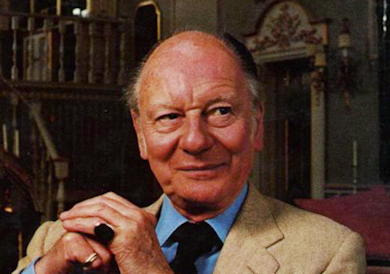
1904 – Born: Sir John Gielgud (d.2000), long acknowledged as one of the greatest British actors of the twentieth century. A highly versatile performer, he played leading and character roles on both stage and screen, in every genre from classical tragedy to low comedy. While in many ways reticent about his sexuality, his experiences illustrate the significant changes in public attitude towards homosexuality over the decades.
Arthur John Gielgud was born in London on April 14, 1904 to a family with theatrical backgrounds on both sides. His father was the son of a Lithuanian actress, and, through his mother, he was the great-nephew of Dame Ellen Terry, the most renowned British actress of the nineteenth century.
Gielgud began acting in his teens, joining the Old Vic theater company in 1921, and making his film debut in the silent picture Who Is That Man? (1923). Soon thereafter, Gielgud became Noël Coward's understudy, eventually taking over the lead roles in Coward's play The Vortex (1924) and Margaret Kennedy's The Constant Nymph (1924). Other successes followed quickly, as Gielgud began to play major Shakespearean roles at the Old Vic, beginning with Romeo, and, before he was thirty, the more mature lead roles in Richard II, The Tempest, Macbeth, Hamlet, and King Lear.

Gielgud as Hamlet
During this time, he began his first major relationship. Actor John Perry lived with him until their separation in the early 1940s.
By the 1930s, Gielgud was a box-office idol—a rather unlikely one, given his bulbous nose and unprepossessing figure; indeed, his detractors thought his Romeo "feminine." His great gifts were his cat-like mobility and, most notably, his expressive voice, which fellow actor Sir Alec Guinness described as being "like a silver trumpet muffled in silk."
Gielgud also became a respected stage director, launching his own distinguished company in 1937 at the Queen's Theatre. He directed and often performed in productions of Shakespeare and such classics as School for Scandal, Three Sisters, and The Importance of Being Earnest. In 1953, Gielgud was named in Queen Elizabeth's Coronation Honors List as the recipient of a rather belated knighthood. That this honor came about at all was a result of two of his colleagues, Sir Laurence Olivier and Sir Ralph Richardson, pleading with Prime Minister Winston Churchill to remedy the grievous oversight.
As Gielgud's homosexuality was generally known if not publicly acknowledged in a time when sexual acts between men were still a criminal offense in Britain (and remained so until 1967), the government had been reluctant to bestow its approval on him. Given the controversy over his knighthood, it was cruelly ironic that within months of receiving the honor, Gielgud was involved in an embarrassing incident that might have been fatally damaging to his career.
During the early 1950s, British legal authorities conducted a veritable persecution of gay men that resulted in criminal charges against a number of prominent figures. Gielgud was arrested outside a public lavatory in Chelsea for "importuning for an immoral purpose," and the press conducted a vitriolic campaign against him. Gielgud nonetheless received a standing ovation upon his next stage appearance, and his arrest is thought to have been instrumental in starting the process of decriminalization. (The incident did not, moreover, prevent the Queen from granting him two further distinctions, the Companion of Honour [1977] and the Order of Merit [1996].) But, having been so deeply humiliated, Sir John never spoke publicly about the matter or his sexuality again, and he was banned from entering the United States for the next four years.
After World War II, Gielgud's career shifted, as he began to appear with greater frequency in the character roles for which he is now best remembered. With the advent of the "Angry Young Men" of the 1950s, Gielgud's acting style was greatly out of fashion on the British stage, and, accordingly, he appeared more frequently in motion pictures. He acted in more than 130 films in his long career, the greater portion of which were made between the 1960s and the 1980s; and in 1982 he received the Academy Award for Best Supporting Actor for his portrayal of the sardonic butler in Arthur.
Finding it increasingly difficult to commit lengthy dialogue to memory, Gielgud retired from the stage in 1988, but continued to perform in films, nearly until the end of his life. At the age of eighty-six, he had his first nude scene in Prospero's Books (1991), and he subsequently appeared in Shine (1996), The Portrait of a Lady (1996), and Elizabeth (1998).
In 1999, he was deeply bereaved by the death of his partner Martin Hensler, with whom he had lived for nearly forty years. Within months, on May 21, 2000, Gielgud himself passed away quietly at his home in Aylesbury, Buckinghamshire, at age ninety-six.


1906 – Elmyr de Hory (born Elemér Albert Hoffmann; d.1976) was a Hungarian-born painter and art forger, who is said to have sold over a thousand art forgeries to reputable art galleries all over the world. His forgeries garnered celebrity from a Clifford Irving book, Fake (1969); a documentary essay film by Orson Welles, F for Fake (1974); and a biography by Mark Forgy, The Forger's Apprentice: Life with the World's Most Notorious Artist (2012).
De Hory claimed that he was born into an aristocratic family, that his father was an Austro-Hungarian ambassador and that his mother came from a family of bankers. However, subsequent investigation has suggested that de Hory's childhood was, more likely, of a middle-class variety; he was born Elemér Albert Hoffmann. (An acquaintance, Fernand Legros, said that de Hory was born in Budapest (Hungary) 14 April 1905, but that de Hory would change the date to 1914 to appear younger.) Both his parents were Jewish. His father's occupation was listed as "wholesaler of handcrafted goods." His parents did not divorce when he was sixteen, as he had asserted in the Clifford Irving biography.
At the outbreak of the Second World War, de Hory was imprisoned in a German concentration camp for being both a Jew and a homosexual. (While his homosexuality was proven over time, investigation into his past has shown the likelihood that he was at one time christened as a Calvinist. Such an ostensible conversion did not stop the Nazi government from targeting people who were born Jewish for extermination.) He was severely beaten and was transferred to a Berlin prison hospital, from which he escaped. He returned to Hungary, and it was there, he said, that he learned that his parents had been killed and their estate confiscated. However, according to Mark Forgy's account, both de Hory's mother and brother were listed as Holocaust survivors.
On arriving in Paris after the war, de Hory attempted to make an honest living as an artist, but soon discovered that he had an uncanny ability to copy the styles of noted painters. He began to sell his Picasso pastiches to art galleries around Paris, claiming that he was a displaced Hungarian aristocrat and his offerings were what remained from his family's art collection or else that he had acquired them directly from the artist, whom he had known during his years in Paris.
In 1959, suffering from depression, he attempted suicide by overdosing on sleeping pills. A friend rescued him and called an ambulance. His stomach was pumped, and after a stay in the hospital de Hory convalesced in New York City, helped by an enterprising young man, Fernand Legros. Legros' account of his dealings with de Hory differs substantially from de Hory's own. He portrays de Hory as an aggressive and persistent con man, who suckers Legros into the belief that he is a needy impoverished aristocrat deserving of Legros's charity, whereas in reality he is a person wanted by Interpol under a multitude of different aliases and convicted of a variety of crimes, forgery and fraud being not the least of them; de Horys is object of pursuits, convictions and expulsions from France, Switzerland, Italy, Federal Germany, Great Britain, from Mexico, from the United States, from Canada, for false check writing without funds, check forgery, forgery carrying a false name, theft, receiver and purveyor of stolen goods, and embezzlement.
In de Hory's account, Legros accompanied de Hory back to Miami where he continued to regain his health. When he imprudently took Legros into his confidence, the other man quickly recognized an opportunity and importuned the artist to let him sell his work in exchange for a 40% cut of the profits, with Legros assuming all the risks inherent in the sale of forgeries.
With Legros, de Hory again toured the United States. In time, Legros demanded his cut be increased to 50%, when in reality Legros was already keeping much of the profit. On one of these trips Legros met Réal Lessard, a French-Canadian who later became his lover. The two had a volatile relationship, and in late 1959 de Hory decided to leave the two and return to Europe.
In Paris, de Hory unexpectedly once more ran into Legros. De Hory revealed to him that some of his forgeries were still back in New York. According to de Hory, Legros devised a plan to steal the paintings and sell them, making a name for himself and his art gallery in the process. Later that year, de Hory's account continues, Legros persuaded de Hory to resume their partnership. Legros and Lessard would continue to sell de Hory's work and agreed to pay him a flat fee of $400 a month, enough to guarantee de Hory a comfortable and risk-free life in his newfound home, the Spanish Mediterranean island of Ibiza.
De Hory always denied that he had ever signed any of his forgeries with the name of the artist whom he was imitating. This is an important legal matter, since painting in the style of an artist is not a crime—only signing a painting with another artist's name makes it a forgery. This may be true, as Legros or Lessard may have signed the paintings with the false names.
In 1964, now 58 years old, de Hory began to tire of the forgery business, and soon his work began to suffer. Consequently, many art experts began noticing that the paintings they were receiving were forgeries. Some of the galleries examining de Hory's work alerted Interpol, and the police were soon on the trail of Legros and Lessard. Legros sent de Hory to Australia for a year to keep him out of the eye of the investigation.
De Hory continued to elude the police for some time but, tired of life in exile, decided to move back to Ibiza to accept his fate. In August 1968, a Spanish court convicted him of the crimes of homosexuality, showing no visible means of support, and consorting with criminals (Legros), sentencing him to two months in prison in Ibiza. He was never directly charged with forgery because the court could not prove that he had ever created any forgeries on Spanish soil. He was released in October 1968 and expelled from Ibiza for one year. During that time he resided in Torremolinos, Spain.
One year following his release, de Hory, by then a celebrity, returned to Ibiza. He sold his story to Clifford Irving, who wrote the biography Fake! The Story of Elmyr de Hory the Greatest Art Forger of Our Time. De Hory appeared in several television interviews and was featured with Irving in the Orson Welles documentary F for Fake (1973). In Welles's film, de Hory questioned what it was that made his forgeries inferior to the actual paintings created by the artists he imitated, particularly since they had fooled so many experts and were always appreciated when it was believed that they were genuine. In F for Fake, Welles also poses questions about the nature of the creative process, how trickery, illusion, and duplicity often prevail in the art world, and thus, in some respects, downplays the culpability of the art forger de Hory and outliers like him.
During the early 1970s, de Hory again decided to try his hand at painting, hoping to exploit his newfound fame: this time, he would sell his own, original work. While he had gained some recognition in the art world, he made little profit, and he soon learned that French authorities were attempting to extradite him to stand trial on fraud charges. This took quite some time, as Spain and France had no extradition treaty at that time.
On December 11, 1976, de Hory's live-in bodyguard and "companion" Mark Forgy informed him that the Spanish government had agreed to extradite de Hory to France. Shortly thereafter, de Hory took an overdose of sleeping pills, and asked Forgy to accept his decision and not intervene or prevent him from taking his life. However, Forgy later went for help to take de Hory to a local hospital, though en route he died in Forgy's arms. Clifford Irving has expressed doubts about de Hory's death, claiming that he may have faked his own suicide in order to escape extradition, but Forgy has dismissed this theory.


1912 – The RMS Titanic strikes an iceberg just before midnight on April 14th. By 2:20 AM, she broke apart and foundered, taking over one thousand three hundred people still aboard to their deaths. Just under two hours after the Titanic foundered, the Cunard liner RMS Carpathia arrived on the scene of the sinking, where she brought aboard an estimated 705 survivors. Among the known gay people who died on the Titanic were crew members second carpenter Michael Brice and Third Officer Sam Maxwell as well as Archibald Willingham Butt who served as an influential military aide to U.S. presidents Theodore Roosevelt and William Howard Taft.


1935 – Erich von Däniken is a controversial Swiss author best known for his claims about extraterrestrial influences on early human culture, in books such as Chariots of the Gods?, published in 1968. Von Däniken is one of the main figures responsible for popularizing the paleocontact and ancient astronaut hypotheses.
Von Däniken is a co-founder of the Archaeology, Astronautics and SETI Research Association (AAS RA). He developed a theme park called Mystery Park in Interlaken, Switzerland, which opened on May 23, 2003 and closed on November 19, 2006.
His 26 books have been translated into more than 20 languages, selling more than 60 million copies worldwide, and his documentary TV shows have been viewed around the world.
Von Däniken's run-ins with the law started at an early age. In the 1960s, Von Däniken worked in hotels and restaurants across Switzerland, and then he was convicted of fraud, serving a prison sentence for defrauding his boss at one hotel. In 1967, soon after Chariots of the Gods was published he was arrested and charged by Interpol with fraud and tax evasion for non-payment of US$14,000.00. On behalf of the prosecution, he was ordered by the Court to undergo psychological examinations, and labelled a homosexual, reflecting a time when being homosexual carried a negative stigma. During the investigation, authorities uncovered a large personal debt totaling about US$700,000. Von Däniken was found guilty of embezzlement, and he served more than three years in Swiss prisons. While in prison, he continued writing, and 'Return of the Gods' was subsequently published.


Dan Roos (L) with Lisa Kudrow & Dan Bucatinsky
1955 – Don Roos is an American screenwriter and film director. Roos was born in New York. He attended the University of Notre Dame in Indiana. After graduating, Roos moved to Los Angeles, where he pursued a career writing for television.
Roos began his writing career when he had a friend of his impersonate an agent and represent him; a phone call led to a job with playwright Mart Crowley (The Boys in the Band), who at the time was Executive Producer of Hart to Hart. Roos went on to write for The Colbys, Nightingales, and other TV shows, before his spec scripts led to feature film writing assignments. His first major film was 1991's Academy Award-nominated Love Field, an interracial drama starring Michelle Pfeiffer and Dennis Haysbert.
Roos' work as the writer of the film Single White Female has earned him a permanent space in Hollywood movie trivia, since that title has entered the lexicon in reference to the film's psychopathic lead character who begins to take on her roommate's identity.
Roos is well-known for his work writing strong and engaging female characters. Ironically, In a 1999 interview in The Advocate, Roos stated that prior to scripting Boys on the Side and The Opposite of Sex, "as a Hollywood screenwriter, I was used to disguising my gay characters as heterosexuals" because of homophobia in the film establishment. His use of an interracial attraction in Love Field, for example, was a way of talking about "a love that dare not speak its name." Roos explained that he used women to stand in for gay men dealing with emotional conflict because "men are still stuck in that ridiculous '50s attitude. They're never allowed to play real fear or any kind of weakness. Women get to play all those feelings." Roos won a Best First Feature Independent Spirit Award for The Opposite of Sex.
In 2000, Roos served as the executive producer of All Over the Guy (2001), a comedy about four friends—a gay couple and a straight one—on an often bumpy road to romance. The assignment gave him the opportunity to work with his life partner since the mid-1980s, writer and actor Dan Bucatinsky.
Roos has appeared at numerous glbtq film festivals, including three at his alma mater, Notre Dame, but he severed that connection after the 2006 event, prior to which the school's president, the Reverend John Jenkins, had condemned the name of the Queer Film Festival as one that would "celebrate and promote homosexual activity" in contravention of Catholic doctrine."I will never come back to Notre Dame again--ever," declared Roos. "When I come here, all I feel is hate. They don't want me here. They don't want me to have my daughter [in the same house] with my boyfriend. They think I will burn in hell. Would Anne Frank go back to Bergen-Belsen?"
Adopting a child in 2005 was a source of great joy for Roos and Bucatinsky. Roos supports a woman's right to choose abortion but was glad to find a woman who not only decided to carry through her pregnancy but also chose a gay couple as the adoptive parents for the child, who was born in Wisconsin. Roos and Bucatinsky were able to file an amended birth certificate in California, with both of their names listed as parents.


1987 – Mississippi creates a "Sex Offense Criminal History Record Information" program. It creates a state registry of convicted sex criminals, including for consensual sodomy. Employers are permitted to request information about employees from it.


9 notes
·
View notes
Text
The Motive and the Cue—directed by Sam Mendes and starring Mark Gatiss as John Gielgud, Johnny Flynn as Richard Burton, and Tuppence Middleton as Elizabeth Taylor—will be released in cinemas worldwide March 21. Written by Jack Thorne, the play is inspired by the making of Richard Burton and Sir John Gielgud’s landmark Broadway production of Hamlet in 1964. Filmed live during its summer 2023 run at the National Theatre, The Motive and the Cue is currently running in London’s West End at the Noël Coward Theatre until March 23.
Woohoo!
Coincidentally, March 21 was the closing night of the Toronto run of Hamlet. On that day, we will read almost nothing about the play, but a whole lot about William Redfield's opinions on film acting, with a guest appearance by Marlon Brando.
2 notes
·
View notes
Text
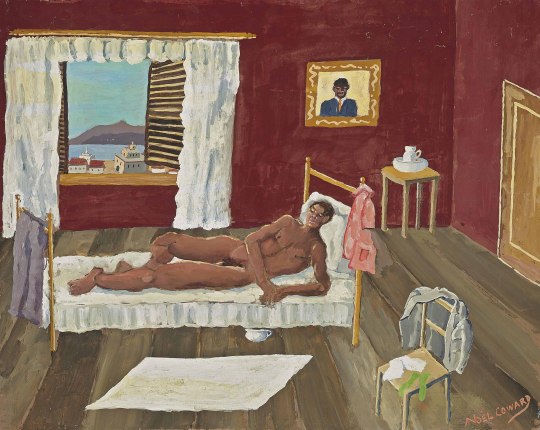
Sir Noël Coward (1899 – 1973), English playwright, composer, director, actor, singer and painter.
27 notes
·
View notes
Photo

Famous Old Harrovians:
“It is easy to do justice – very hard to do right. Unfortunately, while the appeal of justice is intellectual, the appeal of right appears for some odd reason to induce tears in court. That is my answer and my excuse. And now, may I leave the witness box?” (Terence Rattigan – The Winslow Boy)
Born in South Kensington, London, on June 10, 1911, Sir Terence Mervyn Rattigan CBE, was one of England's most popular mid-twentieth century dramatists.
Educated at Harrow (The Park; 1925), and later Trinity College, Oxford, Rattigan's plays are typically set in an upper-middle-class background; and reflecting his own status as a troubled homosexual, are often centred on themes of sexual frustration, failed relationships, and a world of reticence and repression.
Rattigan's birth certificate indicates he was given no middle name; though he adopted the name, Mervyn, in early-adulthood.
For a time the highest-paid screenwriter in the world, Rattigan was knighted in the Queen's Birthday Honours of June, 1971; making him only the fourth playwright to be knighted in the 20th century (after Sir W. S. Gilbert in 1907, Sir Arthur Wing Pinero in 1909, and Sir Noël Coward in 1970).
Sir Terrence Rattigan died in Hamilton, Bermuda, on November 30, 1977. His cremated remains were deposited in the family vault at Kensal Green Cemetery.
Not familiar with Harrow traditions? Whilst at Harrow, Terrence played cricket for the Harrow First XI; scoring 29 in the Eton–Harrow match in 1929.
Always time for one more tradition: He was also a member of the Harrow School Officer Training Corps, and famously organised a mutiny, informing the Daily Express. Even more annoying to his headmaster (Cyril Norwood, previously Master of Marlborough), was the telegram from the Eton OTC, offering to 'march to his assistance!'
*
The Winslow Boy:
Based on a real-life incident in which George Archer-Shee (a cadet at the Royal Naval College, Osborne), was accused of stealing a five-shilling postal order, Terence Rattigan's play, 'The Winslow Boy' (1946), tells of the character's father's fight to clear his son's name; a course of action imperative, set against the strict codes of conduct and manners of the age, as the family would have been shunned by their peers and society, and the boy's life would have been wrecked by an indelible stain on his character which would have followed him throughout adulthood.
The real-life case, Stonyhurst College v George Archer-Shee, set a legal precedent. George's elder brother, Major Martin Archer-Shee, convinced of his brother's innocence, persuaded his father to engage Sir Edward Carson (the barrister who also led the defence of the Marquess of Queensberry against Oscar Wilde).
5 notes
·
View notes
Text
The theatre must be treated with respect. It is a house of strange enchantment, a temple of dreams. What it most emphatically is not and never will be is a scruffy, ill-lit drill hall serving as a temporary soap-box for political propaganda.
Sir Noël Coward
2 notes
·
View notes
Photo
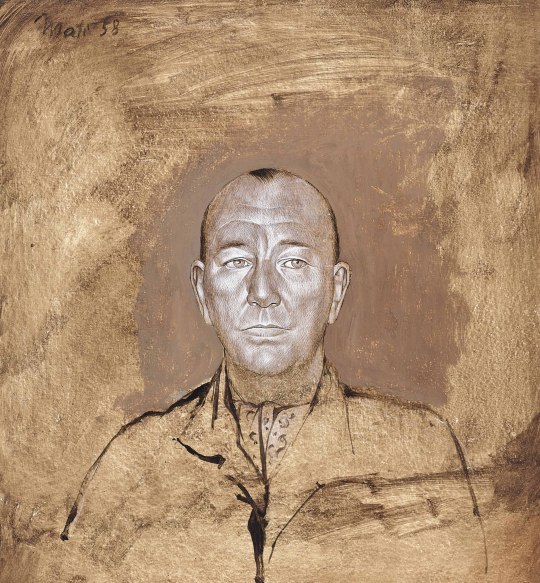
Mati Klarwein - Portrait of Sir Noël Coward
2 notes
·
View notes
Text
'...Best Revival
• The Effect at National Theatre
• Macbeth at Donmar Warehouse
• Shirley Valentine at Duke of York’s Theatre
• Vanya at Duke of York’s Theatre
What will win: The amount of buzz surrounding Andrew Scott’s one-man take on Chekhov’s Vanya has me convinced it will clinch the victory.
What should win: Shirley Valentine – there’s much to be said for David Pugh’s careful producing, finding the perfect star and maintaining affordable pricing.
Best Actor
• Joseph Fiennes for Dear England at National Theatre & Prince Edward Theatre
• Mark Gatiss for The Motive and the Cue at National Theatre & Noël Coward Theatre
• James Norton for A Little Life at Harold Pinter Theatre & Savoy Theatre
• Andrew Scott for Vanya at Duke of York’s Theatre
• David Tennant for Macbeth at Donmar Warehouse
Who will win: I’m expecting Joseph Fiennes to take this one for his charismatic performance as Gareth Southgate in Dear England.
Who should win: In a category filled with arduous turns, it would be lovely to see Mark Gatiss win for his nuanced portrayal of Sir John Gielgud...'
#David Tennant#Macbeth#The Motive and the Cue#Mark Gatiss#Vanya#Andrew Scott#Duke of York's Theatre#Donmar Warehouse
0 notes
Text

Alredered Remembers British playwright, screenwriter, and director, and 1942 Academy Award winner Sir Noël Peirce Coward, on his birthday.
"Never trust a man with short legs – his brain's too near his bottom"
-Sir Noël Peirce Coward
0 notes
Text
Noël Coward: The Master
A proper post today on Sir Noël Coward (1899-1973), our previous one being of the perfunctory sort from the early days of the blog when I much less ambitious about the sort of things I put down here. Why has it taken so long? Well, he’s so major and there’s so much to talk about, and then there’s the daunting reality that I only really know about a dozen of his works, and there are so many dozens…

View On WordPress
1 note
·
View note
Text


1945 film version of Blithe Spirit with Kay Hammond, Margaret Rutherford and Rex Harrison


Blithe Spirit: Dame Judi to raise Britain’s spirits as Coward’s mystic madame
New film of 1941 play hopes to heal a haunted country
In 1941 when Britain was at the mercy of the Blitz, the staging of Noël Coward’s classic play Blithe Spirit, a comedy about death, was considered a risk. But it turned out to be a big hit, with a record run in the West End and then Broadway before being turned into a film four years later starring Rex Harrison.
Now the director of a new version of the film and one of its lead actors, Dame Judi Dench, feel that the “dark space” we are currently in provides another fittingly gloomy backdrop for the release of a production that they hope will lift people’s spirits.
The Oscar-winning actress plays the eccentric mystic, Madame Arcati, who inadvertently conjures up the ghost of a jealous first wife, who is unaware that she is dead when she returns to haunt her scoundrel husband and his new partner.
“When the play opened in the West End in 1941, its subject-matter was, on some levels, quite dark because it was about ghosts, death and losing people,” said Edward Hall, the director of the latest incarnation of Blithe Spirit, which begins filming this week. “But actually Coward wrote this wonderful comedy and it struck a vein. I feel that the time is right to tell that story again to a broad audience because we’re in quite a dark space at the moment.”
Dench is one of Britain’s foremost actresses, whose roles have ranged from monarchs to M in the Bond films. Hall said: “She loves the story, the character and Coward. Like us, she feels it is a great moment to cheer people up. I said to her, ‘when you come out of the cinema, you should feel like you’ve drunk a glass of cold champagne a little too quickly’.” The film marks Hall’s directorial debut in films. He has just stepped down as artistic director of the Hampstead theatre, London, where stage hits include Sunny Afternoon, the Kinks musical that was also a huge West End success, winning Olivier awards. His television productions have included William Boyd’s Restless.
Working with Dench is “extra special”, he said. His late father, the director Sir Peter Hall, cast Dench in landmark productions such as Antony and Cleopatra and A Midsummer Night’s Dream, as well as another Coward classic, Hay Fever.
Blithe Spirit, set in 1937, is one of Coward’s most-loved plays. Hollywood studios competed to adapt it but Coward took the project instead to his friend David Lean. The new film will be released next year, marking the 75th anniversary of the original, which starred Margaret Rutherford alongside Rex Harrison.
The shoot will take place at various UK locations, including a private art deco house and Cliveden, the National Trust’s Buckinghamshire estate. Dench’s character, Madame Arcati, is described by Coward as “a striking woman, dressed not too extravagantly but with a decided bias towards the barbaric”. Hall said: “I always felt there was only one person in the world who could ever play her and that was Judi. Fortunately, she felt the same.”
Downton Abbey star Dan Stevens, who appeared with Dench in Hay Fever, is cast as bestselling crime novelist Charles who suffers from terrible writer’s block in struggling with his first screenplay. His picture-perfect new wife Ruth dreams of leaving London for Hollywood. Seeking inspiration, he invites Madame Arcati to perform a séance in his home, only to realise that she has inadvertently summoned the spirit of his deceased first wife – the fiery Elvira, who tries to win back his affections, leading to an increasingly complex love triangle.
The writer-producers, Nick Moorcroft and Meg Leonard, have adapted Blithe Spirit with Piers Ashworth. Moorcroft said: “It is one of Coward’s most famous comedies and, right now, everybody needs a reason to laugh.”
https://www.theguardian.com/stage/2019/jun/15/blithe-spirit-revival-judi-dench-dark-times
1945 film version of Blithe Spirit with Kay Hammond, Margaret Rutherford and Rex Harrison
Blithe Spirit (1945)
youtube
Blithe Spirit (1945)
AKA:
Abracadabra
Ein lustiger Spuk
El espíritu burlón
Elvira går igen
Geisterkomödie
Het schalkse spook
L'espiègle revenante
L'esprit s'amuse
Min fru går igen
Noel Coward's 'Blithe Spirit'
Seans
Spirito allegro
Spot niet met spoken
To poniron pnevma
Uma Mulher do Outro Mundo
Un espectro travieso
Un espíritu burlón
Vaimoni kummittelee
Vidám kísértet
Веселое привидение
Веселото привидение
陽気な幽霊
0 notes
Text

‘Wit ought to be a glorious treat like caviar; never spread it about like marmalade.’
- Sir Noël Coward, #botd in 1899
44 notes
·
View notes
Photo

A gorgeous snapshot of KENNETH WILLIAMS and INGRID BERGMAN during the press reception for their common stage play, a production of Sir Bernhard Shaw’s “Captain Brassbound’s Conversion” in London, January 1971.
The play premiered on 1 February 1971 in Brighton, was transferred to several British theatres until 31 July 1971 and at last, broke box office records for a short-run play.
... it must have been amazing to witness these extraordinarily talented artists performing together onstage! ♡
Evening show OK and after!!! - I went up to see Sir Noël Coward in Ingrid's room.
[...] I sat at his feet ... he was adorable and said my performance was very good. 'You are one of the few actors I know who can be outrageous and get away with it ... and we love you for it.'
[...] He looked very good and kissed me on both cheeks with real affection. Impossible to tell him what I really owe him but I did say 'My debt to you is infinite & your dialogue and your lyrics go on delighting me and reverberating thro' me every year ... esp. when I sing "Now In the Clear Bright Morning" [from After the Ball] and he replied 'That's my favourite sentimental lyric' and he said I was clever to remember the words. When he'd gone I said to Ingrid 'It's been a beautiful evening and you have made it all possible ... you don't realise how much warmth, delight and love you bring into a room with you ...' Walked home thanking God for bringing all my dreams to fruition ... couldn't sleep for excitement.
The Kenneth Williams Diaries, May 1971
#oh look at THEM ... so precious!!! 💕#Kenneth Williams#Ingrid Bergman#Captain Brassbound's Conversion#Sir George Bernard Shaw#press reception#press photo#British theatre#KW stage work#London#The Kenneth Williams Diaries#KW in his own words#Sir Noël Coward#1971#1970s#photo edits#KWD edits#I'm in love with this pic ... they're so absolutely gorgeous!!!!! 💗
22 notes
·
View notes
Link
#Simon Callow#Jessica Turner#Ash Rizi#acting career#rehearshals#theatre#theater#drama#stage#2018#2010s#Stephen Unwin#Sir Nöel Coward#Noël Coward#Noel Coward#Sir Noel Coward#theatre royal#theatre royal bath#yvonne arnaud#guilford#cambridge arts theatre#Theatre Royal Windsor#malvern#festival theatre#festival theatre malvern#devonshire park theatre#eastbourne#Theatre Royal Norwich#Jane Asher#A Song at Twilight
2 notes
·
View notes
Text

Sir Noël Coward (1899 – 1973), English playwright, composer, director, actor, singer and painter.
25 notes
·
View notes